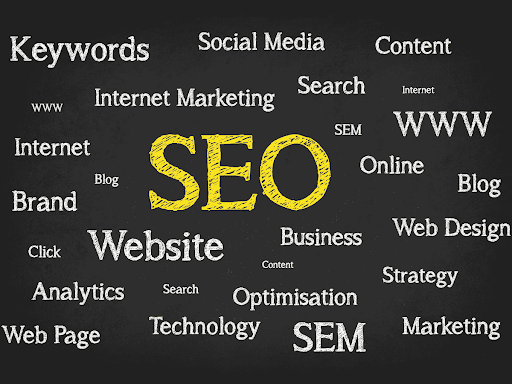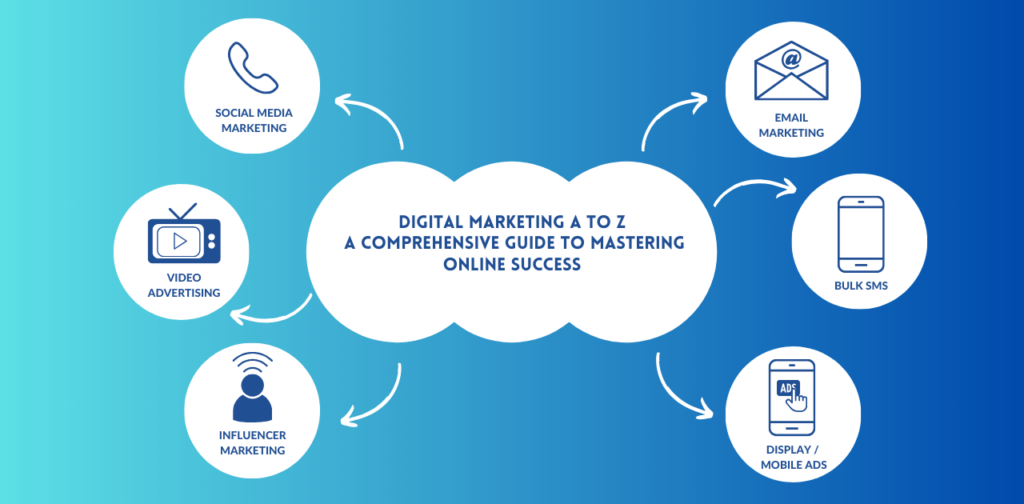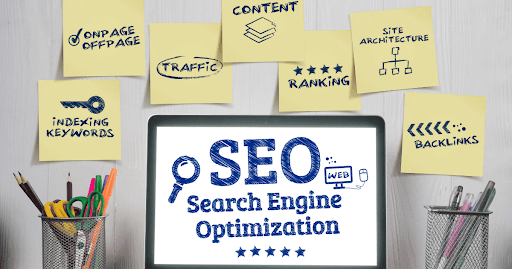How to Prepare for a Digital Marketing Interview and Commonly Asked Questions

Introduction Digital marketing is a rapidly evolving field, and securing a job in this competitive industry requires thorough preparation. Employers look for candidates with technical skills, strategic thinking, creativity, and analytical ability. Whether you are a fresher or an experienced professional, understanding the most frequently asked interview questions and how to answer them effectively can help you land your dream job. In this guide, we will walk you through key areas of digital marketing, essential preparation tips, and the top interview questions to expect, along with expert answers that will set you apart from other candidates. How to Prepare for a Digital Marketing Interview 1. Research the Company and Its Digital Presence Before stepping into an interview, make sure you: 2. Master Core Digital Marketing Concepts Employers expect candidates to be well-versed in fundamental concepts, including: 3. Brush Up on SEO Knowledge SEO is a critical skill in digital marketing interviews. Be prepared to discuss: 4. Get Hands-On Experience with Tools Familiarity with industry tools is a huge advantage. Practice using: 5. Prepare Real-World Case Studies Interviewers often ask for practical examples. Be ready to: Common Digital Marketing Interview Questions and Best Answers 1. What is Digital Marketing? Answer: Digital marketing is the practice of promoting products or services using online platforms such as search engines, social media, email, and websites. It includes SEO, PPC, content marketing, social media marketing, and analytics. 2. What Are the Latest Digital Marketing Trends? Answer: Some emerging trends include AI-driven marketing, voice search optimization, video marketing, influencer marketing, and interactive content like polls and quizzes. 3. What is the Difference Between SEO and SEM? Answer: SEO (Search Engine Optimization) focuses on organic search rankings, while SEM (Search Engine Marketing) includes paid advertising like Google Ads. SEM delivers instant visibility, while SEO is a long-term strategy. 4. How Do You Improve a Website’s SEO? Answer: Improving SEO involves: 5. What Metrics Do You Track in Digital Marketing? Answer: Key metrics include: 6. How Do You Measure the Success of a Content Marketing Campaign? Answer: A successful content marketing campaign is measured by: 7. How Do You Run a Successful PPC Campaign? Answer: 8. What Are Your Favorite Digital Marketing Tools? Answer: Some of the best tools I use are: 9. How Do You Stay Updated With Digital Marketing Trends? Answer: I stay updated by: 10. What Would You Do If a Digital Marketing Campaign Fails? Answer: If a campaign fails, I would: Final Thoughts Preparing for a digital marketing interview requires a mix of technical expertise, hands-on experience, and strategic thinking. By mastering core concepts, staying updated with trends, and practicing real-world scenarios, you can confidently impress hiring managers and land your ideal role.
How to Do an SEO Audit for Your Website (Complete Checklist)

A comprehensive SEO audit is essential for ensuring your website is optimized for search engines and user experience. This guide will walk you through a detailed, step-by-step checklist to help you identify and fix SEO issues, improve rankings, and boost organic traffic. 1. Perform a Technical SEO Audit 1.1 Check Website Crawlability and Indexability 1.2 Fix Site Speed and Performance Issues 1.3 Optimize Mobile-Friendliness 1.4 Secure Your Website (HTTPS) 2. Conduct an On-Page SEO Audit 2.1 Optimize Meta Titles and Descriptions 2.2 Improve URL Structure 2.3 Check for Duplicate Content 2.4 Optimize Header Tags (H1, H2, H3) 2.5 Enhance Content for SEO 3. Conduct an Off-Page SEO Audit 3.1 Analyze Backlink Profile 3.2 Assess Social Media Presence 4. Improve User Experience (UX) for SEO 4.1 Reduce Bounce Rate 4.2 Improve Navigation & Site Structure 4.3 Optimize for Dwell Time 5. Local SEO Audit (For Businesses with Physical Locations) 5.1 Optimize Google My Business Listing 5.2 Build Local Citations 6. Conduct a Content Audit 6.1 Update and Refresh Old Content 6.2 Identify Keyword Gaps 7. Check Technical Issues with Structured Data & Schema Markup 7.1 Implement Schema Markup 7.2 Ensure Proper Open Graph & Twitter Cards 8. Monitor SEO Performance Regularly 8.1 Track SEO Metrics 8.2 Set Up Alerts for SEO Issues By following this comprehensive SEO audit checklist, you can identify and resolve SEO issues, improve search rankings, and drive more organic traffic to your website.
How to Create a Google Ads Business Manager Account

Why You Need a Google Ads Business Manager Account A Google Ads Business Manager Account (previously known as Google Ads Manager Account or MCC – My Client Center) is an essential tool for businesses and agencies that manage multiple Google Ads accounts. This powerful platform allows users to control multiple ad accounts from a single dashboard, streamlining operations and improving efficiency. Step-by-Step Guide to Creating a Google Ads Business Manager Account Step 1: Visit the Google Ads Manager Website To create your Google Ads Business Manager Account, navigate to the official Google Ads Manager website. Step 2: Sign in to Your Google Account Ensure you are signed into a Google Account associated with your business. If you do not have a Google Account, you must create one before proceeding. Step 3: Click on ‘Create a Manager Account’ Step 4: Choose Account Type Step 5: Submit and Confirm After entering the required information, click “Submit.” Google will then confirm the creation of your Google Ads Business Manager Account. Step 6: Set Up Billing Information To run ads, you need to configure your billing details. Step 7: Link Existing Google Ads Accounts If you already manage multiple Google Ads accounts, you can link them to your new Google Ads Business Manager Account: Step 8: Add Users and Manage Permissions A major benefit of Google Ads Business Manager is the ability to collaborate with your team. Advanced Features to Optimize Your Google Ads Business Manager Account 1. Automate Reporting and Insights 2. Use Automated Rules for Efficiency 3. Leverage Audience Targeting 4. Optimize Budget Allocation Common Issues and Troubleshooting Tips 1. Verification Issues 2. Linking Issues 3. Payment and Billing Problems 4. Account Suspension or Restrictions Final Thoughts Creating and managing a Google Ads Business Manager Account is a game-changer for businesses looking to scale their online advertising efforts efficiently. By following this detailed guide, you can set up your account, optimize campaigns, and improve overall performance.
How to Create a Business Portfolio in Meta Business Suite and Business Manager

In today’s digital world, Meta Business Suite and Meta Business Manager provide businesses with a powerful way to manage their online presence. Creating a business portfolio within these platforms allows businesses to oversee multiple pages, ad accounts, and business assets in one place. Whether you are a digital marketer, entrepreneur, or business owner, this step-by-step guide will help you set up and optimize your Meta Business Portfolio effectively. What is Meta Business Suite and Business Manager? Meta Business Suite Meta Business Suite is an all-in-one platform that allows businesses to manage Facebook and Instagram pages, schedule posts, analyze insights, and respond to messages efficiently. Meta Business Manager Meta Business Manager, on the other hand, is a tool designed to help businesses control their digital assets, manage permissions for team members, and securely handle advertising accounts. By setting up a Business Portfolio in these platforms, you can streamline your social media management, ensuring that all your marketing efforts are well-organized. Step 1: Set Up Meta Business Manager 1.1 Create a Meta Business Manager Account 1.2 Add Your Business Assets Once your Meta Business Manager account is created, you need to add business assets such as Facebook Pages, Ad Accounts, and Instagram Accounts. Step 2: Set Up Meta Business Suite Once your Business Manager is set up, the next step is to configure Meta Business Suite to manage content, insights, and audience interactions. 2.1 Connect Your Facebook and Instagram Accounts 2.2 Assign Roles and Permissions Having a structured team with assigned roles ensures efficient workflow and security. Step 3: Organize Your Business Portfolio 3.1 Create Business Asset Groups Business Asset Groups help in organizing multiple business pages, ad accounts, and catalogs. 3.2 Set Up Business Verification To gain full access to Meta’s tools and services, verifying your business is crucial. Step 4: Optimize Your Business Portfolio for Growth 4.1 Use Meta Insights for Performance Tracking Meta Business Suite provides insightful analytics that help in optimizing content and ad performance. 4.2 Leverage Meta Ads Manager for Advertising Running targeted Facebook and Instagram Ads through Meta Business Suite enhances audience reach and conversions. 4.3 Enable Automated Messaging and Customer Support Providing quick responses to customer inquiries builds trust and enhances engagement. Step 5: Maintain and Scale Your Business Portfolio 5.1 Regularly Update Business Information Keeping your business details accurate and up-to-date ensures credibility. 5.2 Expand with New Business Assets As your business grows, adding new assets helps in scaling operations. 5.3 Secure Your Business Portfolio Protecting your business assets is crucial for preventing unauthorized access. Conclusion Creating and managing a business portfolio in Meta Business Suite and Business Manager is essential for any business looking to enhance its digital presence. By following these steps, businesses can effectively manage their online assets, optimize marketing strategies, and drive higher engagement and conversions. Staying updated with Meta’s latest tools and features will further ensure success in social media management.
Gamification in Digital Marketing: The New Secret to User Retention

In the fast-evolving world of digital marketing, brands are constantly searching for innovative strategies to boost user engagement and retention. One of the most effective and increasingly popular techniques is gamification. By integrating game-like elements into marketing campaigns, brands can significantly enhance customer interactions, increase loyalty, and drive conversions. What is Gamification in Digital Marketing? Gamification involves incorporating game mechanics, psychology, and design elements into non-gaming environments to make user interactions more engaging. It can take many forms, including point-based reward systems, challenges, badges, leaderboards, quizzes, and interactive storytelling. Why is Gamification Effective? Gamification taps into fundamental human psychology: Innovative Gamification Strategies for Digital Marketing 1. Interactive Rewards and Loyalty Programs Brands can gamify loyalty programs by introducing tiered memberships, points, and milestone rewards. Instead of offering simple discounts, brands can design engaging challenges where users earn points for completing specific actions like purchases, referrals, or social shares. Example: Starbucks Rewards gamifies customer purchases by offering stars for each order, which can be redeemed for free products and exclusive perks. 2. Quizzes and Interactive Content Quizzes, personality tests, and trivia challenges can drive user engagement by making marketing content more personalized and interactive. Example: BuzzFeed’s quizzes attract millions of users by making them feel involved and curious about the results. Brands can leverage similar mechanics to guide users toward specific products or services. 3. Spin-to-Win Campaigns A simple yet effective strategy is the “spin the wheel” feature on websites where users can win discounts, coupons, or special deals. This small addition increases excitement and boosts conversion rates. Example: E-commerce websites like Shopify stores frequently use spin-to-win pop-ups to capture emails and enhance user engagement. 4. Leaderboards and Competition-Based Marketing Encouraging friendly competition through leaderboards, challenges, and contests can increase brand engagement and word-of-mouth marketing. Example: Nike Run Club encourages fitness enthusiasts to participate in challenges, track their progress, and compete with friends, fostering strong brand loyalty. 5. Augmented Reality (AR) & Virtual Reality (VR) Integration With advancements in AR and VR, brands can create immersive gamified experiences to engage customers in unique ways. Example: IKEA Place AR app allows users to virtually place furniture in their homes, creating an interactive and gamified shopping experience. 6. Storytelling Through Gamification Rather than simply selling products, brands can use interactive storytelling to engage users. Choose-your-own-adventure-style campaigns make users feel like active participants in a brand’s journey. Example: Duolingo keeps users engaged in language learning through storytelling, progress bars, and achievement badges. 7. Gamified Social Media Engagement Social media contests, hashtag challenges, and interactive posts keep users engaged with a brand’s digital presence. Brands can offer rewards for sharing content, tagging friends, or completing specific actions. Example: Instagram challenges like #InMyFeelingsChallenge went viral, proving how gamification can drive social media engagement and virality. How to Implement Gamification in Your Digital Marketing Strategy Step 1: Understand Your Audience Step 2: Set Clear Goals Step 3: Choose the Right Gamification Elements Step 4: Integrate Across Marketing Channels Step 5: Track, Analyze, and Optimize Future of Gamification in Digital Marketing With AI, blockchain, and Web3 technologies, gamification will become even more interactive. NFT-based rewards, metaverse experiences, and AI-powered personalization will redefine customer engagement. Brands that leverage these innovations early will gain a significant competitive edge. Final Thoughts Gamification is no longer just a trend—it’s a powerful tool that enhances user retention, engagement, and brand loyalty. Whether through interactive rewards, quizzes, social media challenges, or AR experiences, incorporating game elements into digital marketing can significantly boost your brand’s success. The key is to create a seamless, fun, and rewarding experience that keeps users coming back.
E-E-A-T SEO: How to Build Authority and Trust in 2025

In the ever-evolving world of search engine optimization (SEO), E-E-A-T (Experience, Expertise, Authoritativeness, and Trustworthiness) is a critical factor for ranking high on Google. As Google’s algorithms become more sophisticated, websites must establish credibility and trust to secure top positions in search engine results. In 2025, implementing E-E-A-T SEO strategies is more essential than ever. This article will guide you through building authority and trust to dominate search rankings. What is E-E-A-T in SEO? E-E-A-T is an integral part of Google’s Search Quality Evaluator Guidelines and stands for: Google uses E-E-A-T to assess the credibility of websites, particularly those that belong to YMYL (Your Money, Your Life) categories, such as finance, health, and law. Strengthening these factors can significantly enhance your website’s SEO performance. Why is E-E-A-T Crucial for SEO in 2025? Google continuously refines its algorithms to prioritize high-quality content that provides value to users. With AI-generated content flooding the internet, search engines are now emphasizing trust and authenticity more than ever. A strong E-E-A-T profile can: How to Build Authority and Trust with E-E-A-T SEO 1. Showcase Experience and Expertise To establish experience and expertise, content creators must demonstrate real-world knowledge and hands-on insights. Strategies include: 2. Optimize Author and Site Credentials Google values content written by industry experts. To enhance credibility: 3. Build Authoritative Backlinks High-quality backlinks from trusted domains signal authority to search engines. Effective link-building strategies include: 4. Prioritize Content Quality and Relevance Creating high-quality content that aligns with user intent is key to SEO success. Best practices include: 5. Improve Website Trustworthiness Google ranks trustworthy sites higher in search results. To build trust: 6. Leverage Social Proof and User Engagement Engagement metrics influence how Google perceives a website’s authority. Boost user interaction by: 7. Optimize for Google’s Helpful Content Update With Google’s focus on helpful content, optimizing for user-centric content is essential. Follow these guidelines: 8. Strengthen On-Page SEO and Technical Optimization Beyond content quality, technical SEO plays a role in E-E-A-T compliance. Ensure: The Future of E-E-A-T in SEO As AI and machine learning reshape search algorithms, websites must prioritize authenticity, transparency, and credibility. The future of SEO lies in: Final Thoughts: Mastering E-E-A-T for SEO Success In 2025, E-E-A-T SEO is the cornerstone of high search rankings. By demonstrating experience, expertise, authority, and trust, businesses can enhance their online reputation, attract organic traffic, and outperform competitors.Implement these strategies now to future-proof your SEO efforts and dominate Google’s SERPs.
Chat with Customers from Your Business Profile: A Complete Guide

In today’s digital landscape, customer engagement is the key to business success. One of the most effective ways to interact with potential customers is through chat options available on your Google Business Profile. Businesses can enable text messaging or WhatsApp chat, allowing customers to ask questions, learn about services, and make informed purchasing decisions quickly. This guide walks you through everything you need to know about adding and managing chat options on your Business Profile, ensuring you maximize engagement and conversions. Why Enable Chat on Your Google Business Profile? Adding chat functionality to your Google Business Profile offers several benefits: How to Add or Edit Chat Options on Your Business Profile Step-by-Step Guide to Enabling Chat on Google Business Profile Follow these steps to enable text messaging or WhatsApp chat: Note: If both text messaging and WhatsApp options are enabled, only the text messaging option will be visible to customers. Optimizing Your Chat Feature for Better Engagement 1. Respond Promptly A delayed response can result in lost opportunities. Make sure to enable notifications and respond to messages as quickly as possible. 2. Use Automated Responses Set up greeting messages and FAQs to handle common inquiries efficiently. 3. Keep Responses Professional and Friendly Your tone should reflect professionalism while maintaining a warm and approachable attitude. 4. Provide Clear and Concise Answers Customers appreciate quick and precise information. Avoid unnecessary fluff in responses. 5. Encourage Customer Engagement Use chat to invite customers to visit your website, book appointments, or avail special offers. Frequently Asked Questions (FAQs) Q1: Can multiple Business Profiles use the same WhatsApp number? Yes, different Business Profiles can use the same WhatsApp link, allowing multiple locations of the same brand to communicate effectively. Q2: Are performance metrics available for chat interactions? Currently, Google does not provide chat-specific performance analytics, but tracking customer inquiries manually can help measure effectiveness. Q3: Can I disable chat after enabling it? Yes, you can turn off the chat option at any time by accessing your Business Profile and editing the chat settings. Q4: What regions support Google Business Profile chat? Chat features are available in select regions. If you do not see the option, Google may not yet support it in your country. Final Thoughts Adding a chat option to your Google Business Profile is a game-changer for customer engagement. It allows businesses to connect with potential customers effortlessly, answer their questions instantly, and enhance their overall experience. By leveraging text messaging or WhatsApp chat, you can establish trust, improve response times, and ultimately drive more sales. Ensure you keep your chat responses prompt, professional, and customer-focused to make the most of this feature.
Best CRM Software: What is the Use, How to Use it, Benefits, and Best Options

What is CRM Software? Customer Relationship Management (CRM) software is an essential tool for businesses aiming to streamline interactions with customers, optimize sales processes, and enhance overall customer satisfaction. CRM software serves as a centralized platform that records, tracks, and manages customer interactions, helping businesses nurture leads, close deals, and maintain long-term relationships. It helps organizations automate processes, improve communication, and ensure that no customer query or lead is overlooked. What is the Use of CRM Software? CRM software is used for various business functions, including: How to Use CRM Software Effectively? Implementing CRM software correctly is crucial to maximizing its benefits. Here are key steps to effectively use CRM software: 1. Define Business Objectives Identify the core business needs and objectives for using CRM software. Whether it’s improving lead conversion, enhancing customer service, or automating sales processes, defining goals helps in proper implementation. This ensures that businesses focus on the right CRM features and make the most of the investment. 2. Integrate with Existing Systems CRM software should seamlessly integrate with other tools like email marketing software, accounting tools, e-commerce platforms, and customer support systems to enhance efficiency. Integrations allow businesses to centralize data, streamline operations, and provide a unified customer experience. 3. Import and Organize Data Once integrated, businesses should import customer data, organize it into categories, and eliminate duplicate or outdated entries for a clean database. A well-maintained CRM database ensures accurate customer insights and enhances communication efficiency. 4. Train Your Team Proper training ensures employees understand how to utilize CRM software effectively. Providing comprehensive training will improve adoption and productivity. Employees should learn key CRM functions such as data entry, pipeline management, and automation workflows. 5. Automate Tasks and Workflows Utilize CRM automation features to schedule follow-ups, send automated emails, assign tasks, and generate reports to save time and enhance efficiency. Automation reduces manual workload, ensures timely responses, and boosts overall efficiency. 6. Analyze Performance Metrics Use CRM analytics to monitor sales performance, track customer interactions, and generate insightful reports for data-driven decision-making. By analyzing CRM data, businesses can identify trends, improve strategies, and optimize customer engagement. What are the Benefits of CRM Software? Implementing CRM software can provide numerous advantages for businesses of all sizes. Below are the key benefits: 1. Improved Customer Relationships CRM software enables businesses to understand customer needs, track their history, and provide personalized interactions, leading to stronger relationships and higher satisfaction. By maintaining detailed customer records, businesses can tailor their approach and foster long-term loyalty. 2. Enhanced Sales Performance By automating sales workflows, businesses can reduce manual effort, shorten the sales cycle, and increase conversion rates through better lead nurturing. Sales teams can efficiently manage leads, set reminders, and close deals faster. 3. Better Team Collaboration CRM software allows sales, marketing, and customer support teams to work together by providing shared access to customer data and communication history. This eliminates miscommunication, ensures smooth coordination, and improves overall team efficiency. 4. Increased Productivity & Efficiency Automating repetitive tasks and streamlining processes help employees focus on core business activities, increasing efficiency and reducing human errors. Employees can spend more time on strategic tasks rather than manual data entry. 5. Data-Driven Decision Making With real-time analytics, businesses can track customer behavior, identify trends, and make informed strategic decisions to improve sales and customer service. CRM reports provide valuable insights that help businesses refine their strategies and drive growth. 6. Scalability for Growth A good CRM system grows with your business, offering features like AI-driven insights, automation, and integration capabilities to support expanding operations. As businesses grow, CRM solutions adapt to handle increased data, users, and workflows. Which is the Best CRM Software? Selecting the right CRM software depends on business size, industry, and requirements. Below are the top CRM solutions currently dominating the market: 1. Salesforce 2. HubSpot CRM 3. Zoho CRM 4. Microsoft Dynamics 365 5. Pipedrive Conclusion Selecting the right CRM software is crucial for business growth. Whether you need a CRM for sales, marketing, or customer support, the best solution depends on your specific needs. Investing in a feature-rich CRM platform enhances productivity, strengthens customer relationships, and increases revenue.
Best CRM & Automation Tools for Small Businesses

In today’s competitive market, small businesses need to leverage cutting-edge tools to streamline operations, enhance customer relationships, and drive sales growth. Customer Relationship Management (CRM) and automation tools have become essential for improving efficiency and delivering exceptional customer experiences. Below, we explore the best CRM and automation tools tailored for small businesses, helping you make an informed decision. Why Small Businesses Need CRM & Automation Tools A CRM system helps small businesses organize customer data, track interactions, and automate repetitive tasks, ensuring seamless operations. Here are the key benefits: Top CRM & Automation Tools for Small Businesses 1. HubSpot CRM – Best Free CRM for Small Businesses HubSpot CRM offers a powerful yet free CRM solution packed with automation features. It’s an excellent choice for small businesses that need a user-friendly, scalable, and all-in-one marketing, sales, and customer service platform. Key Features: 2. Zoho CRM – Best for Customization Zoho CRM is a versatile and affordable CRM solution ideal for small businesses looking for extensive customization options. It integrates well with other Zoho apps, making it a great all-in-one business solution. Key Features: 3. Salesforce Essentials – Best for Scalability For small businesses looking to scale, Salesforce Essentials provides a robust and flexible CRM solution. It combines automation, AI-driven insights, and powerful integrations to support business growth. Key Features: 4. Pipedrive – Best for Sales-Driven Small Businesses Pipedrive is a sales-focused CRM designed to help small businesses streamline their sales pipeline and close more deals. It’s an intuitive and visually appealing platform built to simplify sales processes. Key Features: 5. Freshsales (Freshworks CRM) – Best AI-Powered CRM Freshsales by Freshworks is an AI-powered CRM that helps small businesses automate lead generation, nurture prospects, and close deals efficiently. Key Features: 6. ActiveCampaign – Best for Marketing Automation If email marketing automation is your priority, ActiveCampaign is an excellent CRM choice for small businesses. It provides advanced email marketing automation, customer segmentation, and sales automation features. Key Features: 7. Monday.com CRM – Best for Team Collaboration Monday.com offers a highly customizable CRM that is perfect for small teams looking to improve collaboration and manage workflows effectively. Key Features: 8. Keap (Infusionsoft) – Best All-in-One CRM & Automation Tool Keap is an all-in-one CRM, sales, and marketing automation tool designed to help small businesses organize leads, automate marketing, and grow sales. Key Features: How to Choose the Best CRM & Automation Tool for Your Business When selecting a CRM and automation tool, consider the following factors: Final Thoughts Investing in the right CRM and automation tool can significantly enhance customer relationships, improve efficiency, and drive business growth. Whether you need a free CRM like HubSpot, a sales-focused platform like Pipedrive, or an all-in-one solution like Keap, there is a perfect CRM for every small business.By choosing the best CRM software and automation tools, small businesses can maximize productivity, improve customer satisfaction, and boost overall revenue.
Bento Grid Design: Revolutionizing Modern Web Design for Designers

In the ever-evolving landscape of web design, staying abreast of emerging trends is imperative for designers aiming to create engaging and intuitive user experiences. One such trend that has gained significant traction is the Bento Grid Design. This innovative layout draws inspiration from the traditional Japanese bento box, offering a harmonious blend of aesthetics and functionality. In this comprehensive exploration, we delve into the nuances of Bento Grid Design, its benefits, implementation strategies, and its impact on modern web design. Understanding Bento Grid Design The term “Bento Grid Design” is derived from the Japanese bento box—a compartmentalized meal container that neatly organizes diverse food items. Similarly, in web design, a Bento Grid Layout divides content into distinct sections or compartments, each dedicated to a specific piece of information. This approach ensures a clean, organized, and visually appealing presentation, enhancing the overall user experience. Origins and Evolution The Bento Grid Design trend has been influenced by various design philosophies over the years. Notably, Apple’s promotional videos have showcased grids featuring product specifications and features, making typically mundane spec lists visually appealing by organizing them in a grid with a mix of visuals and typography. Benefits of Bento Grid Design Implementing Bento Grid Design: Best Practices Bento Grid Design in Practice: Inspiring Examples To illustrate the versatility and effectiveness of Bento Grid Design, consider the following exemplary implementations: Challenges and Considerations While Bento Grid Design offers numerous advantages, designers should be mindful of potential challenges: Conclusion Bento Grid Design represents a fusion of aesthetic elegance and functional efficiency, making it a compelling choice for modern web design. By organizing content into distinct, visually appealing compartments, designers can enhance user engagement, improve navigation, and create memorable digital experiences. As with any design trend, thoughtful implementation and adherence to best practices are crucial to harnessing the full potential of Bento Grid Design.
AI-Powered SEO: How to Optimize Content with AI Tools

In the ever-evolving world of search engine optimization (SEO), artificial intelligence (AI) has become a game-changer. AI-powered SEO tools provide marketers and businesses with cutting-edge techniques to boost rankings, enhance content, and increase website traffic. Leveraging AI for SEO is no longer an option but a necessity to stay competitive in digital marketing. Why AI in SEO? The integration of AI in SEO is revolutionizing the way websites rank on search engines. AI-driven algorithms analyze search patterns, predict user intent, and suggest content optimizations. With Google’s AI algorithms, such as RankBrain and BERT, understanding user queries and search intent has become more complex. AI-based SEO tools help decode these algorithms and provide actionable insights. Best AI-Powered SEO Tools for Optimization 1. AI-Driven Keyword Research Traditional keyword research methods are becoming outdated. AI-powered tools like Surfer SEO, Clearscope, and SEMrush use natural language processing (NLP) to find high-ranking keywords based on competitor analysis. These tools identify: By leveraging AI-based keyword suggestions, businesses can target precise audience segments and rank higher in SERPs. 2. AI for Content Creation and Optimization Content remains king in SEO, and AI tools such as Jasper AI, Copy.ai, and Frase.io generate SEO-friendly content that aligns with Google’s E-E-A-T (Experience, Expertise, Authoritativeness, Trustworthiness) guidelines. These tools help: 3. AI-Powered On-Page SEO Optimization Optimizing on-page elements like title tags, internal linking, and structured data is crucial for ranking. AI tools like Page Optimizer Pro, Surfer SEO, and MarketMuse provide: These tools ensure that content structure and readability are optimized to match search engine expectations. 4. AI for Technical SEO Enhancements Technical SEO is the backbone of ranking success. AI-powered platforms such as Screaming Frog, Sitebulb, and DeepCrawl automate site audits and error detection. These tools analyze: By leveraging AI in technical SEO, businesses can fix issues faster and improve user experience. 5. AI-Based Link Building Strategies Backlinks remain a strong ranking factor, but manual link-building is time-consuming. AI tools like LinkHunter and Postaga use machine learning to: This AI-driven approach helps in acquiring quality backlinks effortlessly, improving domain authority. 6. AI-Powered Voice Search Optimization With the rise of voice search, optimizing content for conversational queries is crucial. AI tools like AnswerThePublic and Semrush Topic Research provide insights into natural language queries. By using AI for voice search SEO, websites can: 7. AI for Local SEO & Google My Business Optimization AI-powered tools such as BrightLocal and Yext enhance local SEO rankings by: For businesses targeting geo-specific audiences, AI ensures better visibility in local searches. How AI Aligns with Google’s Latest Algorithm Updates Google’s algorithms continue to evolve, and AI tools adapt to these changes by: Google’s Helpful Content Update and SpamBrain AI algorithm emphasize the need for high-quality, original content. AI-powered tools enhance content relevance and authenticity, ensuring compliance with search engine guidelines. The Future of AI in SEO The future of AI in SEO is promising. AI-driven automation, predictive analytics, and machine learning will continue to shape SEO strategies. Businesses that adopt AI-powered SEO techniques will have a competitive edge in the ever-changing search landscape. Final Thoughts AI-powered SEO is no longer a futuristic concept—it’s a necessity for modern digital marketing. By leveraging AI tools for keyword research, content optimization, technical SEO, and link building, businesses can improve search rankings, increase traffic, and enhance user experience.
Affiliate Marketing: A Comprehensive Guide to Success

Affiliate marketing has become one of the most profitable online business models, allowing individuals and businesses to generate passive income by promoting products and earning commissions. In this detailed guide, we will cover what affiliate marketing is, its types, how it works, its benefits, and how you can make money from it. What is Affiliate Marketing? Affiliate marketing is a performance-based marketing model where an affiliate earns a commission for promoting another company’s products or services. The process involves an affiliate, a merchant, and a consumer. When a consumer purchases a product through the affiliate’s referral, the affiliate earns a percentage of the sale. Types of Affiliate Marketing There are several types of affiliate marketing, each with its own advantages: 1. Unattached Affiliate Marketing In this model, affiliates have no direct connection to the product or service they are promoting. They rely on paid advertising, social media, and search engine marketing to drive traffic to the merchant’s website. This method is ideal for those who don’t want to build a personal brand but still want to earn commissions. 2. Related Affiliate Marketing Affiliates promote products that align with their niche or expertise but have not necessarily used them. This type of marketing leverages trust and authority, allowing influencers and content creators to recommend relevant products to their audience. 3. Involved Affiliate Marketing Affiliates use and genuinely believe in the product they are promoting. They create detailed reviews, tutorials, and case studies to persuade their audience. This method builds a strong connection with potential buyers and increases conversion rates. How Affiliate Marketing Works Affiliate marketing follows a simple yet effective process: 1. Join an Affiliate Program Choose an affiliate network or program such as Amazon Associates, ShareASale, Commission Junction, ClickBank, or Rakuten Marketing. Each platform offers a variety of products to promote. 2. Select a Product or Service Pick a product or service that aligns with your niche and target audience. Ensure it provides value and has a high conversion rate. 3. Generate an Affiliate Link Once you choose a product, the affiliate network provides a unique tracking link that identifies sales generated through your referrals. 4. Promote the Product Use various digital marketing strategies such as content marketing, SEO, social media, email marketing, and PPC (Pay-Per-Click) advertising to drive traffic to your affiliate links. 5. Earn Commissions When a consumer clicks on your link and completes a purchase, you earn a commission. The commission structure varies based on the merchant’s policies. Benefits of Affiliate Marketing Affiliate marketing offers numerous benefits, making it a popular choice for digital entrepreneurs. 1. Passive Income Potential Once you create valuable content and rank well on search engines, you can generate passive income without continuous effort. 2. Low Startup Costs Unlike traditional businesses, affiliate marketing requires minimal investment. You can start with a website, blog, or social media account. 3. No Inventory or Customer Support Affiliates don’t need to handle inventory, shipping, or customer support, making it a hassle-free business model. 4. Performance-Based Earnings Your income potential is unlimited, as you get paid based on performance rather than a fixed salary. 5. Flexibility and Freedom Affiliate marketing allows you to work from anywhere with an internet connection, providing ultimate flexibility. How to Make Money with Affiliate Marketing To succeed in affiliate marketing, you need a strategic approach. Here are the steps to maximize your earnings: 1. Build a Website or Blog Having a website increases credibility and allows you to create valuable content that attracts visitors. Use platforms like WordPress, Wix, or Squarespace to set up a professional site. 2. Focus on SEO and Organic Traffic Optimize your content for search engines by using keyword-rich titles, meta descriptions, and high-quality backlinks. Tools like SEMrush, Ahrefs, and Moz can help improve your rankings. 3. Leverage Social Media Promote your affiliate links on Facebook, Instagram, Twitter, and Pinterest to reach a broader audience. 4. Use Email Marketing Build an email list and send personalized product recommendations. Tools like Mailchimp and ConvertKit can help automate campaigns. 5. Create Engaging Content High-quality content such as blog posts, product reviews, comparison articles, and video tutorials increases engagement and conversions. 6. Utilize Paid Advertising Google Ads, Facebook Ads, and influencer partnerships can drive targeted traffic to your affiliate offers. 7. Track and Optimize Performance Use Google Analytics, UTM parameters, and affiliate dashboards to monitor performance and optimize your strategies for higher earnings. Final Thoughts Affiliate marketing is a lucrative and scalable online business model that allows individuals to earn passive income by promoting products. By choosing the right affiliate programs, creating high-quality content, leveraging SEO, and engaging with your audience, you can build a successful affiliate business.
Google Ads vs. Facebook Ads: Which is Better for ROI?

In the ever-evolving world of digital marketing, businesses are constantly looking for the best ways to maximize their return on investment (ROI). Two of the most powerful platforms in the advertising space are Google Ads and Facebook Ads. While both platforms have their unique strengths, choosing the right one depends on your business goals, audience, and budget. In this article, we will dive deep into the key differences, advantages, and ROI potential of Google Ads and Facebook Ads to help you make an informed decision. Understanding Google Ads How Google Ads Work Google Ads operate on a pay-per-click (PPC) model, where advertisers bid on keywords to display their ads at the top of Google’s search results. These ads appear when users search for specific terms, making them highly intent-driven. Advantages of Google Ads Disadvantages of Google Ads Understanding Facebook Ads How Facebook Ads Work Facebook Ads operate on a pay-per-impression (PPM) or pay-per-click (PPC) model and use demographic, behavioral, and interest-based targeting to reach users on Facebook and Instagram. Advantages of Facebook Ads Disadvantages of Facebook Ads ROI Comparison: Google Ads vs. Facebook Ads Cost Per Click (CPC) & Return on Ad Spend (ROAS) Conversion Rates Best for B2B vs. B2C Which One Should You Choose? Use Google Ads If: Use Facebook Ads If: Best Approach: A Hybrid Strategy Instead of choosing one over the other, many businesses find success in combining both Google Ads and Facebook Ads. For instance: Final Thoughts Both Google Ads and Facebook Ads offer unique benefits and challenges. The best choice depends on your industry, budget, and marketing objectives. A well-optimized strategy that leverages both platforms can maximize ROI and drive sustainable growth.
Google Ads Case Study: How a Startup Got 5X ROI in 30 Days

Introduction In the competitive world of digital marketing, achieving a high Return on Investment (ROI) from Google Ads is no small feat. Many startups struggle to optimize their advertising budgets, but with the right strategies, exponential growth is possible. In this case study, we will explore how a startup managed to achieve a 5X ROI in just 30 days using a data-driven and highly optimized Google Ads campaign. Understanding the Startup’s Challenge The startup in question, a tech-driven e-commerce platform, was struggling with high Customer Acquisition Costs (CAC) and low conversion rates. They had previously attempted Google Ads but saw limited success due to poor targeting, inefficient budget allocation, and ineffective ad creatives. The goal was to maximize ROI while keeping the advertising spend within a reasonable limit. Step 1: Market & Audience Analysis Before launching the campaign, the startup conducted an in-depth market and audience analysis to understand their potential customers. Using Google Analytics and Google Trends, they identified the following key factors: Step 2: Crafting High-Converting Google Ads The team focused on ad copywriting, keyword selection, and ad placements to ensure maximum engagement. Here’s what they optimized: 1. Keyword Optimization 2. Ad Copy That Drives Clicks 3. Optimized Landing Pages Step 3: Smart Budgeting & Bidding Strategy One of the biggest challenges for startups is efficiently managing ad spend. The startup followed these strategies to optimize budget allocation: Step 4: Retargeting & Lookalike Audiences The startup implemented a robust retargeting campaign to capture lost conversions and lookalike audience targeting to expand its customer base. Step 5: Performance Tracking & Continuous Optimization The key to sustained success with Google Ads is constant monitoring and tweaking. The startup followed a data-driven approach: The Results: 5X ROI in 30 Days By implementing the above strategies, the startup achieved outstanding results within just one month: The success of this campaign was largely driven by high-intent targeting, ad copy optimization, smart bidding, and continuous performance tracking. Conclusion: Key Takeaways for Startups Any startup looking to maximize Google Ads ROI should focus on the following: Continuously Optimize & Track Performance: A/B testing and analytics should be at the core of your strategy.
What is Internet Marketing? Definition and Examples

Introduction to Internet Marketing In the modern digital landscape, internet marketing has become an essential strategy for businesses looking to reach and engage with their target audience. With billions of users online, the internet provides a vast platform for companies to promote their products and services efficiently. Internet marketing leverages various online channels to drive traffic, generate leads, and increase sales. Definition of Internet Marketing Internet marketing, also known as online marketing or digital marketing, refers to the use of digital platforms to promote brands, products, or services to potential customers. It encompasses a broad range of marketing tactics, including search engine optimization (SEO), content marketing, social media marketing, email marketing, pay-per-click (PPC) advertising, and affiliate marketing. These strategies help businesses attract and retain customers in a competitive online environment. Key Components of Internet Marketing 1. Search Engine Optimization (SEO) SEO is the process of optimizing a website to improve its ranking on search engines like Google, Bing, and Yahoo. The goal is to increase organic (unpaid) traffic by using keywords, backlinks, high-quality content, and technical optimizations. SEO is divided into three main categories: 2. Content Marketing Content marketing focuses on creating and distributing valuable, relevant, and consistent content to attract and retain a clearly defined audience. This can include: Content marketing helps businesses establish authority, build trust, and improve customer engagement. 3. Social Media Marketing Social media marketing (SMM) utilizes platforms like Facebook, Instagram, Twitter, LinkedIn, and TikTok to promote products and services. Businesses use social media to engage with customers, build brand awareness, and drive traffic to their websites. Key strategies include: 4. Pay-Per-Click (PPC) Advertising PPC advertising involves running paid ads on platforms like Google Ads, Bing Ads, and social media channels. Advertisers pay a fee each time a user clicks on their ad. PPC is highly effective for businesses looking for immediate traffic and conversions. Popular PPC ad formats include: 5. Email Marketing Email marketing remains one of the most cost-effective and direct ways to engage customers. Businesses use email campaigns for: Personalization and automation play a crucial role in the success of email marketing campaigns. 6. Affiliate Marketing Affiliate marketing allows businesses to partner with affiliates (bloggers, influencers, and website owners) who promote their products in exchange for a commission on sales. Popular affiliate marketing networks include Amazon Associates, ShareASale, and CJ Affiliate. 7. Influencer Marketing This strategy involves partnering with social media influencers or industry experts to promote products or services. Influencer marketing is highly effective for brands targeting younger audiences on platforms like Instagram, YouTube, and TikTok. 8. Conversion Rate Optimization (CRO) CRO focuses on improving website design, content, and user experience to increase the percentage of visitors who complete a desired action, such as purchasing a product, signing up for a newsletter, or filling out a contact form. Examples of Internet Marketing in Action Benefits of Internet Marketing Conclusion Internet marketing is a powerful tool for businesses looking to establish a strong online presence and drive sales. By leveraging SEO, content marketing, social media, PPC, and other digital strategies, businesses can effectively engage with their target audience and achieve long-term success in the digital marketplace. Frequently Asked Questions (FAQs) 1. What are the main types of internet marketing? The main types of internet marketing include SEO, content marketing, social media marketing, email marketing, PPC advertising, affiliate marketing, and influencer marketing. 2. Why is internet marketing important? Internet marketing is crucial because it allows businesses to reach a global audience, increase brand awareness, drive traffic, and generate more leads and sales at a lower cost than traditional marketing methods. 3. What is the difference between SEO and PPC? SEO focuses on organic search engine rankings, while PPC involves paid advertisements where businesses pay for each click on their ads. 4. How can I improve my website’s SEO? To improve SEO, optimize your website content with relevant keywords, build high-quality backlinks, improve website speed, use mobile-friendly design, and create engaging, high-quality content. 5. What is the best social media platform for marketing? The best social media platform depends on your business and target audience. Facebook, Instagram, LinkedIn, Twitter, and TikTok are popular options for different types of businesses. 6. How does email marketing help businesses? Email marketing helps businesses nurture leads, increase customer retention, and boost sales by sending targeted and personalized messages to their audience.
Top Skills in 2025: High-Paying Skills to Make Money Online

The key to success in the future is to remain flexible. As we get closer to 2025, maintaining a competitive edge in the job market entails developing the necessary skill set. With the digital economy thriving like never before, certain high-paying skills have become essential for anyone looking to generate money online. These abilities not only provide profitable prospects, but also allow you to work remotely, start your own business, or push your profession to new heights. The possibilities are endless, from using the power of AI and automation to succeeding in content creation and digital marketing. Whether you’re just starting out or looking to improve your talents, acquiring these in-demand skills can dramatically transform your financial perspective. The top skills that are anticipated to rule in 2025 will be examined in this essay. Each has been carefully selected based on simplicity of learning, revenue potential, and current industry trends. So let’s begin with these transformative opportunities if you’re prepared to safeguard your future and capitalize on online earning possibilities! Top High-Paying Skills 1. The Power of AI & Automation 2. Graphic Designing 3. Content Creation 4. WordPress Development 5. Digital Marketing 6. Data Analysis 7. Freelancing What is AI & Automation? Automation and artificial intelligence (AI) are revolutionizing our way of life and work. The term artificial intelligence (AI) describes the process by which machines can imitate human intelligence and think, learn, and make decisions. In contrast, automation is the use of technology to carry out activities with little or no human involvement. When combined, they produce systems that are capable of functioning well and efficiently without continual supervision by humans. Automation and artificial intelligence are commonplace. Smart assistants like Alexa and Siri simplify our daily tasks, chatbots respond to consumer inquiries around-the-clock, and automated workflows in businesses increase productivity by lowering human labor. Time savings, mistake reduction, and process optimization are the goals of these technologies. Healthcare, finance, manufacturing, and retail are just a few of the industries that are affected by AI and automation. Applications range from robotic process automation to predictive analytics. Learning AI and automation skills is crucial for remaining competitive in the modern work market, as organizations are embracing these technologies more and more. The present is changing how the world functions, not simply the future. AI Career Opportunities The need for AI experts is growing rapidly, from automation specialists to machine learning developers. Businesses are paying top price for professionals who can increase productivity and streamline procedures. How to Start Learning AI Skills Start by taking advantage of free courses offered by sites such as Udemy or Coursera. As you progress, master technologies like TensorFlow and OpenAI APIs and delve into programming languages like Python. Graphic Designing Visual content is expected to continue to dominate the digital landscape in 2025. As platforms like Instagram, TikTok, and Pinterest gain popularity, it is evident that captivating images can attract viewers and increase interaction more than ever before. An important component of social media and digital marketing strategies is visual material since people are drawn to eye-catching images, lively videos, and imaginative graphics. Companies are depending more and more on eye-catching graphics to tell their tales, deliver messages, and create enduring impressions. Visuals enable organizations to emotionally engage their audience, whether through visual infographics, visually appealing blogs, or excellent video content. An engaging design is no longer optional in a world where people’s attention spans are shorter than ever. Gaining success in visual storytelling is essential for both designers and marketers. It’s now simpler than ever to produce high-quality images that may improve brand visibility and boost conversions thanks to apps like Canva, Adobe Suite, and Figma. Developing design skills is a wise investment for anyone hoping to succeed in the digital age, as the need for visually appealing material continues to rise. Tools All Graphic Designers Need to Know Adobe Photoshop, Illustrator, and Canva are examples of master tools. Being knowledgeable about Procreate and Figma might also help you stand out from the competition. How to Develop Your Skills as a Graphic Designer Take online classes, work on simulated projects, and create an eye-catching portfolio to draw in clients. Content Creation “Content is king” is the fundamental principle of any effective digital strategy, not merely a catchphrase. The caliber and applicability of information are what distinguish companies in a time when legitimacy is determined by an organization’s online presence. Content is essential for building relationships with audiences, whether it takes the form of interesting blogs, captivating films, or viral social media posts. High-quality content has several uses. It increases organic traffic by raising search engine ranks, fosters trust by attending to the demands of the audience, and eventually increases sales by assisting users throughout the customer journey. An effective video may humanize the company and create emotional bonds, while a well-written blog can position a brand as an authority in the field. Additionally, content is the foundation of digital marketing techniques such as SEO, email marketing, and social media campaigns. It’s not just about creating; it’s about delivering value consistently. In 2025, as competition intensifies, content that resonates with audiences and tells a compelling story will remain a powerful tool for achieving digital success. Investing in content creation skills is a surefire way to thrive in this dynamic landscape. Platforms for Content Producers For creators, TikTok, Instagram, and YouTube are popular platforms. Additionally, blogging on sites like Medium and Substack has the potential to generate revenue. Effective Content Monetization Make money from your love of creating content by using subscriptions, sponsored posts, and affiliate marketing. WordPress Development With over 40% of all websites powered by it worldwide, WordPress continues to rule the web development scene, and for good reason. It is the preferred platform for people, companies, and developers due to its intuitive interface, unparalleled adaptability, and vast ecosystem. Among WordPress’s best features is its versatility. WordPress has the resources to suit your needs, whether you’re a developer creating a massive e-commerce platform or
Search Engine Optimization (SEO)

Search Engine Optimization (SEO) is a strategic process used to enhance a website’s visibility in search engines like Google, Bing, and Yahoo. It involves optimizing various elements of a website to improve its ranking on search engine results pages (SERPs). SEO is essential for driving organic traffic, increasing brand credibility, and ensuring better user experience. In today’s competitive digital landscape, businesses that neglect SEO risk losing potential customers to competitors who have optimized their sites effectively. From keyword research to link building and technical enhancements, SEO encompasses a wide range of tactics that help websites achieve sustainable growth. This guide will break down Search Engine Optimization (SEO) in detail and help you master the techniques for better rankings. Why SEO Matters for Websites SEO is critical for websites because it helps them appear in search results when users look for relevant information, products, or services. Without SEO, even the best-designed website may struggle to attract visitors. An optimized website improves user experience, builds trust, and enhances brand visibility. Additionally, SEO is cost-effective compared to paid advertising and delivers long-term results. Businesses leveraging SEO strategies see a higher return on investment (ROI) due to consistent traffic and improved lead generation. Search Engine Optimization (SEO) 1. On-Page SEO On-Page SEO refers to the optimization techniques applied directly to individual pages to enhance search rankings. It includes optimizing title tags, meta descriptions, headings, content, images, and internal links. Proper On-Page SEO ensures that search engines understand the content of a page and rank it accordingly for relevant queries. 2. Off-Page SEO Off-Page SEO focuses on activities outside your website that influence rankings. It includes link building, social media engagement, influencer collaborations, and brand mentions. High-quality backlinks from authoritative websites signal trustworthiness to search engines, improving rankings. 3. Technical SEO Technical SEO deals with backend optimizations that enhance a website’s crawlability, indexing, and user experience. It involves improving site speed, ensuring mobile-friendliness, using structured data, and implementing HTTPS for security. Search engines prioritize websites that offer seamless user experiences and quick load times. Understanding Search Engine Algorithms Search engines use algorithms to evaluate and rank websites based on relevance, authority, and user experience. Google’s ranking factors include content quality, backlinks, mobile usability, page speed, and user engagement metrics. Understanding these factors helps webmasters create SEO strategies that align with search engine guidelines, leading to improved rankings and visibility. Keyword Research: The Backbone of SEO Keyword research is fundamental to SEO success. It involves identifying words and phrases that users type into search engines when looking for information. Using keyword research tools like Google Keyword Planner, Ahrefs, and SEMrush helps in finding relevant keywords with high search volume and low competition. Targeting long-tail keywords (specific phrases) is beneficial as they have lower competition and higher conversion rates. On-Page SEO Strategies 1. Optimizing Meta Titles and Descriptions Meta titles and descriptions are crucial for improving click-through rates (CTR). They should be concise, compelling, and include primary keywords naturally. 2. Proper Use of Headers (H1, H2, H3, etc.) Using structured headers helps organize content and improves readability. Search engines prioritize well-structured content with clear heading hierarchies. 3. Image Optimization Optimizing images involves using descriptive alt text, compressing images for faster loading, and ensuring compatibility across devices. 4. Internal Linking Linking to relevant pages within your site enhances navigation, keeps users engaged longer, and distributes page authority effectively. Off-Page SEO Strategies 1. Link Building Techniques Gaining backlinks from high-authority websites boosts credibility and rankings. Popular methods include guest posting, broken link building, and outreach campaigns. 2. Social Media Signals Although not a direct ranking factor, social media engagement increases brand awareness, drives traffic, and supports link-building efforts. Technical SEO Best Practices Technical SEO ensures that search engines can efficiently crawl and index a website. Key aspects include: Mobile-Friendliness: Ensuring responsive design for seamless browsing. Site Speed Optimization: Faster load times improve user experience and rankings. XML Sitemaps and Robots.txt: Help search engines navigate and index site content. Schema Markup: Enhances search visibility with rich snippets. Conclusion: The Importance of Ongoing SEO Efforts Search Engine Optimization (SEO) is a long-term investment that requires continuous optimization. As search engine algorithms evolve, staying updated with best practices ensures sustained rankings and organic traffic growth. By focusing on quality content, user experience, and technical improvements, businesses can maintain a competitive edge online. FAQs 1. How long does SEO take to show results? SEO results typically take 3-6 months, depending on competition and strategy effectiveness. 2. What is the best free SEO tool? Google Search Console is one of the best free tools for tracking SEO performance. 3. Can I do SEO myself? Yes, with proper research and tools, you can implement basic SEO strategies yourself. 4. Is SEO better than paid advertising? SEO provides long-term results, whereas paid advertising offers immediate but temporary traffic. 5. How often should I update my SEO strategy? Regular updates based on algorithm changes and industry trends ensure continued success.
Mastering SEO Indexing: Strategies to Ensure Your Website’s Visibility

In the digital landscape, search engine indexing is the cornerstone of online visibility. Without proper indexing, even the most compelling content remains hidden from potential audiences. This comprehensive guide delves into effective strategies to ensure your website is indexed promptly and accurately by search engines, thereby enhancing your site’s accessibility and ranking. Understanding Search Engine Indexing Search engine indexing refers to the process by which search engines like Google and Bing analyze and store information about web pages. This process enables search engines to retrieve and display relevant content in response to user queries. If a page isn’t indexed, it won’t appear in search results, rendering it virtually invisible to users. Submit an XML Sitemap to Google Search Console An XML sitemap is a file that lists all the essential pages of your website, guiding search engines to crawl and index your content efficiently. Submitting your sitemap to Google Search Console ensures that search engines are aware of all your site’s pages, including those that might be hard to discover through regular crawling.To create and submit an XML sitemap: Generate the Sitemap: Utilize SEO plugins like Yoast SEO or Rank Math to automatically generate a sitemap. Alternatively, online tools can assist in creating one manually. Submit via Google Search Console: Navigate to the ‘Sitemaps’ section in Google Search Console and enter your sitemap URL. This submission alerts Google to crawl and index your site’s pages. Regularly updating and resubmitting your sitemap, especially after adding new content, keeps search engines informed about your site’s structure and updates. Optimize Your Robots.txt File The robots.txt file instructs search engine crawlers on which pages to crawl and index. A well-configured robots.txt file ensures that search engines can access your site’s important content without hindrance.Best practices for configuring your robots.txt file include: Allow Essential Resources: Ensure that critical resources like CSS and JavaScript files are accessible to crawlers, as blocking them can impede proper indexing. Block Unnecessary Pages: Prevent indexing of pages that don’t contribute to your site’s SEO, such as admin pages or duplicate content. Regularly reviewing and testing your robots.txt file using tools like Google’s Robots Testing Tool helps maintain optimal crawler access. Enhance Server Performance and UptimeSearch engines prioritize websites with reliable servers and fast load times. A slow or frequently down server can lead to incomplete crawling and indexing.To improve server performance: Choose a Reliable Hosting Provider: Opt for hosting services known for high uptime and speed. Implement Caching Mechanisms: Use caching to reduce server load and improve page load times. Monitor Server Uptime: Employ monitoring tools to receive alerts about downtime and address issues promptly. Ensuring your server’s reliability enhances user experience and encourages search engines to index your site more frequently. Develop a Robust Internal Linking Structure Internal links connect different pages within your website, aiding both users and search engines in navigating your content. A strategic internal linking structure ensures that all pages, especially new ones, are discoverable and indexable.Effective internal linking practices include: Use Descriptive Anchor Text: Employ clear and relevant anchor text that reflects the linked page’s content. Link to New Content: When publishing new pages or posts, link to them from existing relevant content to facilitate faster indexing. Implement Breadcrumbs: Utilize breadcrumb navigation to display the hierarchical structure of your site, enhancing both user experience and crawlability. Regularly auditing your internal links ensures there are no broken links and that all content is accessible to search engines. Resolve Crawl Errors Promptly Crawl errors occur when a search engine attempts to access a page but encounters issues, such as broken links or server errors. Addressing these errors is crucial for maintaining your site’s indexing status.Steps to identify and fix crawl errors: Monitor Google Search Console: Regularly check the ‘Coverage’ report for any crawl anomalies. Fix Identified Issues: Resolve errors by correcting broken links, fixing server issues, or updating redirects. Validate Fixes: After making corrections, use Google Search Console to validate that the issues have been resolved. Proactive management of crawl errors ensures that search engines can access and index your content without obstacles. Optimize Website Loading Speed Website speed is a critical factor in both user experience and search engine indexing. Slow-loading sites may be crawled less frequently, affecting indexing and ranking.To enhance loading speed: Compress Images: Use tools to reduce image file sizes without compromising quality. Minify Code: Simplify CSS, JavaScript, and HTML code to improve load times. Enable Browser Caching: Allow browsers to store certain files locally, reducing load times for returning visitors. Utilize Content Delivery Networks (CDNs): Distribute your content across global servers to ensure faster access for users worldwide. Regularly testing your site’s speed using tools like Google PageSpeed Insights can help identify and rectify performance issues. Maintain a Clean and Simple URL Structure A straightforward URL structure enhances both user experience and search engine indexing. Clear URLs provide insights into page content and improve crawlability.Best practices for URL structure: Use Descriptive Keywords: Incorporate relevant keywords that reflect the page’s content. Avoid Special Characters: Refrain from using complex characters that can confuse crawlers. Keep It Concise: Shorter URLs are easier to read and share. Ensure Mobile-Friendliness with Responsive Design With the rise of mobile browsing, search engines prioritize mobile-friendly websites. A responsive design ensures your site adapts seamlessly to various screen sizes, enhancing user experience and indexing.To achieve mobile-friendliness: Implement Responsive Design: Use flexible layouts and media queries to adapt to different devices. Optimize Touch Elements: Ensure buttons and links are easily tappable on mobile devices. Test Mobile Usability: Regularly assess your site’s mobile performance using tools like Google’s Mobile-Friendly Test. A mobile-optimized site not only improves user engagement but also aligns with search engine indexing preferences. Regularly Update and Publish Fresh Content Search engines favor websites that consistently provide fresh, valuable content. Regular updates signal to search engines that your site is active and relevant, encouraging frequent crawling and indexing.Best practices for content updates: Publish New Articles Frequently: Aim to add high-quality blog posts, guides, or case studies on a
Mastering Semantic SEO: Elevate Your Search Rankings by Understanding User Intent

What is Semantic SEO and Why It Matters? Semantic SEO is the practice of optimizing content for search engines by focusing on the meaning and intent behind user queries rather than just specific keywords. In today’s digital landscape, Google’s algorithms have evolved to understand the context and relationships between words, making traditional keyword stuffing obsolete. Instead, search engines prioritize high-quality content that provides valuable and relevant information to users. By incorporating Semantic SEO strategies, we can improve our search rankings, drive organic traffic, and enhance user experience by delivering content that matches search intent. Understanding User Intent in Search Queries User intent refers to the reason behind a search query. It is categorized into three primary types: By understanding user intent, we can craft optimized content that aligns with the expectations of our target audience and search engine algorithms. The Role of Natural Language Processing (NLP) in Semantic SEO Google’s NLP advancements, such as BERT (Bidirectional Encoder Representations from Transformers) and RankBrain, analyze and interpret search queries based on their context rather than focusing solely on individual keywords. This means content should: By incorporating semantic variations, we help search engines understand the full scope of our content while improving its discoverability. How to Optimize Content for Semantic SEO? 1. Conduct In-Depth Keyword Research with Topic Clusters Instead of focusing on single keywords, we should build topic clusters—groups of interlinked content pieces covering a broad subject. For example: 2. Use Structured Data Markup Schema markup helps search engines better understand content and display rich snippets in search results. Key schema types for SEO optimization include: 3. Create High-Quality, Comprehensive Content Google’s E-E-A-T (Experience, Expertise, Authoritativeness, Trustworthiness) framework plays a crucial role in ranking high-quality content. To meet these criteria, content should: 4. Optimize for Voice Search and Conversational Queries With the rise of voice assistants like Google Assistant and Siri, long-tail keywords and natural language queries have become crucial. Strategies include: 5. Leverage Internal Linking and Contextual Relevance A well-structured internal linking strategy ensures that search engines can crawl and understand the relationship between different content pieces. Best practices include: How Google’s Knowledge Graph Impacts Search Rankings Google’s Knowledge Graph enhances search results by connecting entities, concepts, and topics. To optimize for the Knowledge Graph, we should: By aligning our content strategy with Google’s Knowledge Graph, we improve our chances of appearing in knowledge panels and featured snippets. The Importance of Latent Semantic Indexing (LSI) Keywords LSI keywords are conceptually related terms that help search engines understand content context. To integrate LSI keywords effectively: Measuring the Success of Your Semantic SEO Strategy Tracking key performance indicators (KPIs) is essential for evaluating SEO success. Important metrics include: Conclusion Semantic SEO is the future of search engine optimization. By understanding user intent, leveraging NLP advancements, and creating high-quality, structured content, we can significantly enhance our search rankings. Implementing topic clusters, structured data, and internal linking will help us stay ahead of the competition and drive sustainable organic growth. Frequently Asked Questions (FAQs) on Semantic SEO 1. What is the main goal of Semantic SEO? The primary goal of Semantic SEO is to improve search engine understanding of content by focusing on user intent, context, and related topics rather than just individual keywords. 2. How does Semantic SEO differ from traditional SEO? Traditional SEO relies on exact-match keywords, while Semantic SEO emphasizes context, intent, and topic relevance using NLP and structured data. 3. What are some effective Semantic SEO strategies? Key strategies include using topic clusters, structured data, internal linking, optimizing for voice search, and leveraging NLP advancements. 4. How does Google’s BERT algorithm impact Semantic SEO? BERT helps Google better understand natural language queries, making well-structured, high-quality content more important than ever. 5. What tools can help with Semantic SEO? Useful tools include Google NLP API, SEMrush, Ahrefs, Surfer SEO, and Google Search Console.
How Tracking Transforms Your Digital Marketing Strategy for Better ROI

In today’s competitive digital landscape, tracking and analytics are crucial in enhancing marketing strategies and boosting ROI. Businesses that fail to track their marketing activities frequently experience wasted funds, poor targeting, and unsuccessful campaigns. By employing data-driven insights, marketers can optimize campaigns, increase audience engagement, and boost conversions. This article will explore how tracking transforms your digital marketing strategy, ensuring a better return on investment (ROI) and sustainable growth. 1. Understanding the Importance of Tracking in Digital Marketing Tracking is the foundation of an effective digital marketing strategy. Without it, businesses operate in the dark, making decisions based on assumptions rather than data. Proper tracking helps marketers: Identify what works and what doesn’t Allocate budget effectively Improve customer targeting Optimize conversions 2. Key Metrics to Track for a Successful Digital Marketing Strategy To maximize ROI, businesses need to monitor essential metrics such as: Conversion rates: Measure the percentage of visitors taking desired actions Customer acquisition cost (CAC): Determines how much it costs to gain a new customer Return on ad spend (ROAS): Evaluates profitability from paid campaigns Bounce rate and engagement: Indicates user experience and content effectiveness 3. Types of Digital Marketing Tracking Tracking spans multiple digital marketing channels, including: Website analytics (Google Analytics, heatmaps) Social media performance (Facebook Insights, Twitter Analytics) Email marketing (Mailchimp, HubSpot) PPC and ad tracking (Google Ads, Bing Ads) 4. How Google Analytics Enhances Marketing Performance Google Analytics provides powerful insights into user behavior. Key features include: Audience reports: Understand demographics and interests Acquisition reports: Track traffic sources Behavior flow: Analyze customer journey paths 5. UTM Parameters and Their Role in Campaign Tracking UTM tracking allows marketers to pinpoint traffic sources by appending parameters to URLs. This helps in: Evaluating campaign success Refining targeting strategies Measuring ROI accurately 6. Customer Behavior Tracking for Personalized Marketing Understanding how users interact with your website improves personalization. Tools like Hotjar and Crazy Egg reveal: Heatmaps of user activity Session recordings for better UX insights Conversion funnel analysis 7. A/B Testing: The Secret to Optimized Marketing Strategies A/B testing is critical in refining marketing strategies. By testing different elements, businesses can: Improve website conversions Enhance ad performance Optimize email campaigns 8. Real-Time Tracking and Its Impact on Ad Campaigns Real-time tracking enables marketers to adjust strategies instantly, preventing wasted spend and maximizing impact. 9. CRM Integration for Effective Lead Tracking A CRM system enhances lead tracking and follow-up strategies. Salesforce, HubSpot, and Zoho CRM help nurture leads effectively. 10. SEO Tracking: How to Measure Your Search Performance Monitoring SEO performance ensures sustainable organic growth. Google Search Console, Ahrefs, and SEMrush provide valuable insights into search rankings and traffic. Conclusion Tracking is no longer optional—it’s essential for a successful digital marketing strategy. By leveraging the right tracking tools and analyzing data, businesses can make data-driven decisions, optimize campaigns, and maximize ROI. Whether it’s website analytics, A/B testing, or social media insights, tracking transforms marketing efforts into measurable success. FAQs Q: Why is tracking important in digital marketing? A: Tracking helps optimize marketing strategies, improve targeting, and boost ROI by providing actionable data insights. Q: Which tracking tool is best for digital marketing? A: Google Analytics, Facebook Insights, HubSpot, and Ahrefs are among the best tools for tracking marketing performance. Q: How does real-time tracking benefit ad campaigns? A: It allows marketers to make instant adjustments, preventing budget wastage and improving conversion rates. Q: What is the role of A/B testing in marketing? A: A/B testing helps optimize marketing elements, ensuring better engagement and higher conversions. Q: Can tracking improve SEO strategies?A: Yes, tracking search rankings, backlinks, and organic traffic can refine SEO efforts for better visibility.
How to Start a Blog in 2025 | What is the Best Niche

What is Blogging in 2025? In 2025, starting a blog is a fantastic way to express yourself, reach a worldwide audience, and potentially make money. Even for newbies, starting a blog has never been simpler thanks to developments in blogging platforms and tools. Blogging offers countless opportunities, whether your goal is to express your passions, build a personal brand, or get involved in affiliate marketing. Choosing the ideal niche is the first step; in 2025, subjects including artificial intelligence (AI), sustainable living, personal finance, health, and tourism will be popular. Your audience should be content-hungry and your niche should align with your passions. Next, pick a blogging platform like WordPress, Squarespace, or Wix and get a domain name that is memorable and search engine friendly. Step-by-Step Guide to Starting a Blog Planning Your Blog Before you go in, you need a plan. Choosing a Niche Your blog’s niche serves as its cornerstone. Make sure there is a market for the subject you are passionate about. Personal development, travel, and technology are popular niches. Identifying Your Target Audience For whom are you writing? Determine your ideal reader’s needs, interests, and demographics. Setting Clear Goals Choose whether you want to use your blog for cash creation, personal branding, or a combination of the two. Picking the Right Platform Selecting the best blogging platform is essential because there are so many possibilities accessible. 2025’s Top Blogging Platforms Squarespace, Ghost, and WordPress are still in the lead. Platforms like as Wix or Medium provide simple settings for novices. A Comparison of Paid and Free Options While free platforms are excellent for getting started, paid options offer greater control and customization. Domain Name and Hosting Your blog’s domain name is its identity. How to Choose a Domain Name Keep it simple, memorable, and relevant to your niche. Best Hosting Providers for Bloggers Bluehost, SiteGround, and Hostinger offer competitive plans for bloggers. Designing Your Blog Your blog’s design influences its first impression. Selecting a Theme or Template Choose a theme that’s clean, customizable, and suited to your niche. Importance of Mobile-Friendly Design With mobile usage skyrocketing, ensure your blog looks great on all devices. Creating Content That Stands Out Content Creation Strategies Consistency is key when it comes to content. Types of Blog Posts to Write Mix it up with how-to guides, personal stories, and listicles. Understanding SEO in 2025 Search engine algorithms prioritize user experience and high-quality, relevant content. Master keywords, internal linking, and engaging headlines. Engaging Your Audience Developing a devoted readership requires work. Creating a Calendar of Content To keep your posts consistent, plan them ahead of time. Making Use of Social Media To increase visibility, share your posts on social media sites like Instagram, Twitter, and LinkedIn. Monetizing Your Blog How to Make Money Blogging Your blog may turn into a revenue stream once it becomes popular. Affiliate Promotion Earn a commission for each sale you make by promoting products. Ads & Sponsored Posts Work together with companies to highlight their goods or services. Offering Digital Goods for Sale Build and market courses, e-books, or templates. What Are the Best Niches in 2025? Profitable Blogging Niches While certain topics are hot in 2025, others are timeless. AI and technology This niche is extremely relevant given the growth of AI tools. Health and Wellness This sector, which includes fitness advice and mental health advice, is still expanding. Personal Finance individuals are constantly searching for methods to make prudent investments and save money. Sustainable Lifestyle Eco-friendly ways of living are growing in popularity. How to Choose the Right Niche for You Find a niche that aligns with your interests, expertise, and market demand. Sustaining Your Blog’s Success Building an Email List Email marketing remains one of the most effective ways to engage readers. Analyzing Performance Metrics Use tools like Google Analytics to track your blog’s performance. Staying Consistent and Motivated Blogging success doesn’t happen overnight. Stay patient and keep creating. Conclusion In 2025, starting a blog is a wonderful possibility. You can start a blog that attracts visitors and brings in money by picking a suitable niche, producing excellent content, and maintaining consistency. Are you prepared to begin blogging? Go ahead and leave your mark! FAQs How much does it cost to start a blog in 2025? Costs can range from $50 to $200 annually for a domain and hosting, plus additional expenses for themes and tools. Can I start a blog without technical skills? Absolutely! Many platforms offer drag-and-drop functionality that requires no coding knowledge. What is the fastest way to grow a blog? Focus on quality content, promote your posts on social media, and optimize for SEO. How long does it take to make money from a blog? Typically, it takes 6-12 months to see significant earnings, depending on your niche and effort. Are blogs still relevant in 2025? Yes! Blogs remain a powerful medium for sharing information and building personal or professional brands.
Digital Marketing A to Z: A Comprehensive Guide to Mastering Online Success

In the ever-evolving digital landscape, businesses must adapt to stay relevant and competitive. Digital marketing has emerged as the cornerstone of modern business strategies, enabling brands to connect with their audience, drive engagement, and achieve measurable results. Whether you’re a beginner or an experienced marketer, this A-to-Z guide will walk you through everything you need to know about digital marketing, including keyword targeting, meta descriptions, and actionable strategies to succeed online. A: Analytics Analytics is the backbone of digital marketing. Tools like Google Analytics, SEMrush, and HubSpot help you track website traffic, user behavior, and campaign performance. By analyzing data, you can make informed decisions, optimize strategies, and improve ROI. Keyword Targeting: Use keywords like “digital marketing analytics tools,” “how to track campaign performance,” and “data-driven marketing strategies.” Meta Description: “Learn how to leverage analytics tools to track and optimize your digital marketing campaigns. Discover data-driven strategies for better ROI.” B: Blogging Blogging is a powerful content marketing tool that helps businesses establish authority, improve SEO, and engage with their audience. Regularly publishing high-quality, keyword-optimized blogs can drive organic traffic to your website. Keyword Targeting: Focus on keywords like “how to start a blog,” “blogging for business,” and “SEO-friendly blog writing tips.” Meta Description: “Discover the power of blogging for business growth. Learn how to create SEO-friendly blogs that drive traffic and engage your audience.” C: Content Marketing Content marketing involves creating and sharing valuable, relevant, and consistent content to attract and retain a target audience. This includes blogs, videos, infographics, eBooks, and more. Keyword Targeting: Use keywords like “content marketing strategies,” “how to create engaging content,” and “content marketing examples.” Meta Description: “Master content marketing with proven strategies to create engaging, valuable content that drives traffic and boosts conversions.” D: Digital Advertising Digital advertising includes paid campaigns like Google Ads, Facebook Ads, and display ads. These campaigns allow you to target specific audiences and achieve quick results. Keyword Targeting: Target keywords like “digital advertising tips,” “how to run Google Ads,” and “Facebook Ads best practices.” Meta Description: “Explore the world of digital advertising and learn how to create effective paid campaigns on Google, Facebook, and other platforms.” E: Email Marketing Email marketing is a cost-effective way to nurture leads, promote products, and build customer relationships. Personalized and automated email campaigns can significantly improve engagement and conversions. Keyword Targeting: Use keywords like “email marketing strategies,” “how to write effective emails,” and “email automation tools.” Meta Description: “Unlock the potential of email marketing with proven strategies and tools to nurture leads and boost customer engagement.” F: Facebook Marketing With over 2.9 billion monthly active users, Facebook is a goldmine for marketers. From organic posts to paid ads, Facebook offers numerous opportunities to reach your target audience. Keyword Targeting: Focus on keywords like “Facebook marketing tips,” “how to create Facebook Ads,” and “Facebook algorithm updates.” Meta Description: “Learn how to leverage Facebook marketing to grow your brand, engage your audience, and drive conversions.” G: Google Ads Google Ads is a powerful PPC platform that allows businesses to display ads on Google’s search engine results pages (SERPs). It’s an effective way to drive targeted traffic to your website. Keyword Targeting: Use keywords like “how to set up Google Ads,” “Google Ads best practices,” and “PPC advertising tips.” Meta Description: “Master Google Ads with step-by-step guidance and best practices to create high-converting PPC campaigns.” H: Hashtags Hashtags are essential for increasing the visibility of your social media posts. They help categorize content and make it discoverable by users interested in specific topics. Keyword Targeting: Target keywords like “how to use hashtags effectively,” “best hashtag strategies,” and “hashtags for Instagram.” Meta Description: “Discover the power of hashtags and learn how to use them effectively to boost your social media reach and engagement.” I: Influencer Marketing Influencer marketing involves partnering with social media influencers to promote your brand. It’s an effective way to build trust and reach a wider audience. Keyword Targeting: Use keywords like “influencer marketing strategies,” “how to find influencers,” and “benefits of influencer marketing.” Meta Description: “Explore the world of influencer marketing and learn how to collaborate with influencers to grow your brand.” J: Journey Mapping Customer journey mapping helps you understand the path your customers take from awareness to purchase. By analyzing this journey, you can identify pain points and optimize the user experience. Keyword Targeting: Focus on keywords like “customer journey mapping,” “how to create a customer journey map,” and “customer experience optimization.” Meta Description: “Learn how to create a customer journey map to improve user experience and drive conversions.” K: Keywords Keywords are the foundation of SEO and digital marketing. They help search engines understand your content and match it with user queries. Keyword Targeting: Use keywords like “how to find keywords,” “keyword research tools,” and “long-tail keywords.” Meta Description: “Master keyword research and learn how to use keywords effectively to improve your SEO and drive organic traffic.” L: Landing Pages Landing pages are designed to convert visitors into leads or customers. A well-optimized landing page with a clear call-to-action (CTA) can significantly improve conversion rates. Keyword Targeting: Target keywords like “how to create a landing page,” “landing page best practices,” and “high-converting landing pages.” Meta Description: “Discover the secrets to creating high-converting landing pages that drive leads and sales.” M: Meta Descriptions Meta descriptions are short summaries that appear below your page title in search engine results. They play a crucial role in attracting clicks and improving SEO. Keyword Targeting: Use keywords like “how to write meta descriptions,” “meta description best practices,” and “SEO meta descriptions.” Meta Description: “Learn how to write compelling meta descriptions that improve click-through rates and boost your SEO.” N: Native Advertising Native advertising involves creating ads that blend seamlessly with the content on a platform. These ads are less intrusive and often perform better than traditional ads. Keyword Targeting: Focus on keywords like “native advertising examples,” “how to create native ads,” and “benefits of native advertising.” Meta Description: “Explore the world of native
10 Work from Home Jobs That Pay Up to $200,000+ in 2025

High-paying work-from-home positions are becoming more accessible than ever as the workforce changes. Professionals can now work from home and earn six-figure salaries thanks to companies that support remote work. A recent MyPerfectResume survey found that 40% of workers would look for remote work if they were required to return to the office. This list of the highest-paying remote jobs in 2025 can help you achieve financial success and flexibility if you’re searching for a successful work-from-home career Top 10 High-Paying Work from Home Jobs in 2025 FlexJobs and Ladders have revealed that the following are the highest-paying remote jobs, with wages above $100,000: 1. Staff Data Scientist Salary: $180,700 – $257,200 Why It Pays Well: Data scientists are essential in tech-driven companies because they evaluate complicated datasets, develop predictive models, and apply AI-driven solutions. 2. Project Management Senior Consultant Salary: $112,000 – $176,000 Why It Pays Well: Businesses require project managers to manage remote teams, increase workflow efficiency, and streamline operations. 3. Assistant Safety Director Salary: $130,000 – $165,000 Why It Pays Well: In terms of the digital transition, regulatory knowledge and safety compliance are essential for remote and hybrid work settings. 4. Quantitative Analyst Salary: $102,000 – $155,000 Why It Pays Well: In investment firms and hedge funds, those with expertise in data analysis, risk assessment, and financial modeling are essential. 5. Medical Imaging Trainer and Screening Analyst Salary: $97,300 – $194,700 Why It Pays Well: As AI and digital imaging become more prevalent in the healthcare sector, there is a growing need for experts who can remotely analyze medical data and teach teams. 6. Senior Manager, Customer Experience Salary: $115,765 – $219,932 Why It Pays Well: Businesses place a great priority on improving digital customer experiences, which results in substantial compensation for experts who can increase customer engagement and retention. 7. Director, Content and Communications Salary: $148,678 – $236,264 Why It Pays Well: To create strategies that improve brand visibility and audience engagement, businesses require competent leaders in communication and content. 8. Senior Performance Marketing Manager Salary: $96,649 – $158,881 Why It Pays Well: Digital marketing is still a profitable business, with performance marketers driving revenue growth through targeted campaigns and analytics. 9. Lead Product Marketing Manager Salary: $164,653 – $203,223 Why It Pays Well: Strategic product marketing specialists are critical to establishing and implementing effective marketing strategies that generate sales and business growth. 10. Content Marketing Lead Salary: $112,947 – $142,781 Why It Pays Well: Content marketing is critical for brand legitimacy, audience engagement, and conversion optimization, hence expert content leads are quite valuable. Top Skills Needed for High-Paying Work from Home Jobs To stand out in the competitive employment market, you must have the necessary abilities. Here are the required technical and soft talents to land a six-figure work-from-home position: Technical Skills Artificial intelligence and machine learning: Automation, data analysis, and predictive modeling are in high demand. Cybersecurity expertise: Protecting digital assets is a significant responsibility for distant businesses. Data Analysis & Visualization: Knowing Python, R, or SQL improves career prospects. Cloud Computing and DevOps: Understanding AWS, Google Cloud, and DevOps technologies is vital. Digital Marketing and SEO: SEO, PPC advertising, and analytics are essential for marketing positions. Power Skills (soft skills) Critical Thinking: Businesses want problem solvers who can create and strategize. Leadership and Team Management: Effective management of distributed teams is critical. Communication Skills: Effective verbal and written communication fosters smooth teamwork. Stakeholder Management: Understanding business objectives and coordinating tactics are critical. Adaptability and self-discipline: Remote employment necessitates exceptional time management and productivity abilities. Future Trends in High-Paying Work from Home Jobs Here are some emerging trends shaping remote work in 2025: 1. AI & Machine Learning Domination AI-driven roles, including data science and automation specialists, will see significant salary growth. Businesses will invest in AI experts to enhance efficiency and innovation. 2. Rise of Remote Leadership Roles Companies need skilled remote team managers and operations leaders. Strategic leadership positions will command higher salaries. 3. Healthcare & Tech Integration Telemedicine, digital health, and AI-driven diagnostics will create new high-paying job opportunities. Professionals with expertise in healthcare and technology will be in demand. 4. Strategic Hiring in an Uncertain Economy Businesses will prioritize roles that drive revenue and operational efficiency. High-paying jobs in financial planning, business strategy, and digital operations will increase. Conclusion The future of remote work is promising, with lucrative job opportunities in tech, finance, marketing, and healthcare. By acquiring in-demand skills, networking strategically, and staying ahead of industry trends, professionals can secure six-figure remote roles and enjoy financial freedom with work-life balance. Start preparing today and take control of your career in 2025!
DeepSeek-V3: The AI Assistant Revolutionizing the Future

Artificial intelligence (AI) has become a game-changer in the rapidly changing world of technology, altering how people communicate, work, and live. DeepSeek-V3, one of the numerous AI developments, is a strong and adaptable assistant that is intended to make life simpler, more effective, and more productive. However, what precisely is DeepSeek-V3, where does it originate, and how can it be applied to add value or even generate revenue? Let’s get started. Where Does DeepSeek-V3 Come From? The History of DeepSeek-V3 DeepSeek-V3 is a powerful AI assistant created by DeepSeek, a business at the cutting edge of artificial intelligence research and development. DeepSeek-V3 is based on cutting-edge machine learning models and is intended to interpret and respond to human language with exceptional accuracy and context awareness. It was created with the purpose of making AI more accessible, practical, and valuable to both individuals and enterprises. DeepSeek-V3’s adventure started with the quick development of deep learning and natural language processing (NLP) technology. Massive datasets and advanced algorithms were used to train DeepSeek-V3 to do a variety of activities, from creating content and responding to queries to resolving challenging issues and streamlining processes. Where Does DeepSeek-V3 Come From? DeepSeek’s engineers, data scientists, and AI researchers worked together to create DeepSeek-V3. To develop tools that are not just clever but also morally and practically sound, the company is dedicated to pushing the limits of artificial intelligence. DeepSeek-V3 is designed to be a dependable partner for anyone needing help, be it for business, school, or personal use. What Can DeepSeek-V3 Do? DeepSeek-V3 is an AI assistant that may be used for many different purposes. Here are a few of its main applications: Content Creation: DeepSeek-V3 can produce excellent material in a matter of seconds, whether you’re in need of blog entries, social media captions, or marketing copy. Customer Support: Companies can automate customer support by using DeepSeek-V3 to efficiently resolve problems and respond to frequently asked questions. Education and Learning: DeepSeek-V3 can be used by educators and students for research, tutoring, and the simplification of difficult subjects. Task Automation: DeepSeek-V3 can manage emails and schedule appointments, among other repetitive duties, freeing up time for more crucial pursuits. Idea Generation: Are you having trouble coming up with a project? DeepSeek-V3 can help you think creatively, generate ideas, and offer recommendations. How Can You Earn Money Using DeepSeek-V3? DeepSeek-V3’s adaptability creates a wealth of chances to profit from its features. You can use DeepSeek-V3 in the following ways to make money: Freelance Content Creation: Provide writing services on websites such as Upwork or Fiverr. Create articles, blogs, and marketing materials for clients fast using DeepSeek-V3. Social Media Management: Use DeepSeek-V3 to manage several social media accounts for businesses by producing interesting content, answering comments, and spotting patterns. Online Tutoring: Make lesson plans, clarify ideas, and give students individualized learning experiences with DeepSeek-V3. E-commerce Support: Do you manage an online store? DeepSeek-V3 can assist with marketing efforts, client questions, and product descriptions. AI-Powered Consulting: Use DeepSeek-V3 to improve your business by providing consulting services in fields like productivity, marketing, and content strategy. Develop AI Tools: DeepSeek-V3 can be integrated into unique products or applications that you can market to companies or people if you are tech-savvy. The Future of DeepSeek-V3 DeepSeek-V3 is set to become even more potent and user-friendly as AI technology develops. It will continue to be a useful tool for both individuals and corporations because of its capacity for learning and adaptation. DeepSeek-V3 can assist you with streamlining your process, increasing your creativity, or investigating new revenue streams. Conclusion DeepSeek-V3 is a doorway to a more intelligent and effective future, not just an AI helper. You can open up a world of possibilities by learning about its background, strengths, and prospects. DeepSeek-V3 is prepared to help you reach your objectives, regardless of your background?student, professional, entrepreneur, or creative. Why wait, then? Investigate your options now to discover how DeepSeek-V3 might change your life?and possibly your finances!
Best Free SEO Tools 2025

Search Engine Optimization (SEO) remains one of the most effective tactics for driving organic traffic, and using the finest free SEO tools can offer your site a substantial advantage. With the correct tools, you can assess your competition, optimize your website, and ensure your content complies with current SEO guidelines. Here’s a complete overview of the best free SEO tools for 2025. What Are SEO Tools? SEO tools make it easier to optimize your website by providing information on its performance, keyword rankings, backlinks, and other factors. They save you time, provide actionable data, and verify that your website fits the search engine requirements for higher results. Top Free SEO Tools You Need in 2025 1. Google Analytics Google Analytics is one of the most effective tools for tracking website performance. It generates thorough information on traffic sources, user behavior, and conversions. Key Features: Monitors web traffic and user interactions. Provides audience demographics and interests. Analyzes bounce rates, session lengths, and pages per session. Why use it? It’s essential for understanding your audience and developing your website using data-driven insights. 2. Google Search Console Google Search Console is critical for tracking and troubleshooting your website’s appearance in Google search results. Key Features: Tracks keyword performance and clickthrough rates. Identifies crawling faults and indexing problems. Provides information about mobile usability and key web vitals. Why Use It? It ensures that your website is optimized for Google’s algorithms and assists in troubleshooting SEO issues. 3. Ubersuggest Developed by Neil Patel, Ubersuggest is a comprehensive SEO tool for keyword research, backlink analysis, and content ideas. Key Features: Offers keyword suggestions and search volume data. Provides competitor analysis. Tracks domain authority and backlink profiles. Why use it? It’s beginner-friendly yet powerful enough to uncover hidden opportunities for improving rankings. 4. Ahrefs Webmaster Tools Ahrefs Webmaster Tools (AWT) is a free version of Ahrefs that focuses on site audits and backlinks. Key Features: Check your website for SEO concerns. Monitor the backlink profiles. Monitors keyword performance. Why use it? AWT offers valuable insights without the requirement for a paid subscription. 5. SEMrush SEO Toolkit (Free Plan) SEMrush’s premium capabilities are well-known, but the free plan provides useful tools for small enterprises and individuals. Key features: Conducts keyword research with limited searches. Tracks competitors’ performance. Offers on-page SEO tips. Why use it? It’s ideal for getting started in competitive analysis and SEO optimization. 6. Answer the Public Answer the Public is a unique technique for finding long-tail keywords and determining search intent. Key features: Visualizes search queries using questions, comparisons, and prepositions. Creates hundreds of keyword suggestions. Why use it? It’s a great resource for content providers and bloggers wanting to answer particular customer questions. 7. Keyword Planner by Google Google’s Keyword Planner is a free tool that helps marketers identify the most relevant keywords for their campaigns. Key features: Provides keyword suggestions and search volume. Displays keyword competition levels. It integrates seamlessly with Google Ads. Why use it? It is a dependable source of accurate keyword data directly from Google. 8. Screaming Frog SEO Spider The free version of Screaming Frog is a website crawler that analyzes technical SEO issues. Key features: It detects broken links, duplicate content, and redirect chains. examines page titles, meta descriptions, and headings. Identifies missing or erroneous canonical tags. Why use it? It is great for conducting efficient audits on huge websites. 9. Yoast SEO (WordPress Plugin) Yoast SEO is one of the most popular WordPress plugins, providing on-page optimization help. Key features: Reviews readability and keyword density. Provides recommendations for meta descriptions and titles. Helps with the creation of XML sitemaps. Why use it? It’s a must-have for WordPress sites aiming to boost their on-page SEO. 10. MozBar MozBar is a browser extension that displays quick SEO analytics for any page you visit. Key Features: Shows domain authority and page authority. Highlights on-page features such as meta tags and headers. Analyses link profiles. Why Use It? It is useful for conducting rapid competition analyses and on-page checks. 11. GTmetrix GTmetrix specializes in website speed and performance optimization. Key features: Provides page load time and performance ratings. Makes recommendations for faster load times. Tracks the performance history over time. Why use it? Speed is a ranking determinant, and GTmetrix verifies that your website fulfills Google’s performance guidelines. 12. SEOQuake SEOQuake is another browser extension that provides a number of SEO indicators at your fingertips. Key Features: Provides keyword density reports. Analyzes SERP results to determine competition. It generates SEO audit reports. Why Use It? It’s ideal for assessing competition strategies directly from search engine results. Choosing the Right Tools for Your Needs Each SEO tool has advantages, and your requirements determine the best combination. As an example: Keyword Research: Ubersuggest, Answer the Public, Keyword Planner. Technical SEO: Screaming Frog, Ahrefs Webmaster Tools, GTmetrix. Content Optimization: Yoast SEO, SEMrush. Competitor Analysis: MozBar, SEMrush, SEOQuake. Conclusion: The SEO landscape is continuously changing, and utilizing the appropriate tools may make or break your campaign. These best free SEO tools in 2025 provide a good foundation for increasing the visibility of your website, whether you’re optimizing content, researching rivals, or auditing it. By exploiting these resources, you may remain ahead of the competition and meet your digital marketing objectives.
10 Proven SEO Strategies to Rank on Google: Master Targeting Keywords for Success.

Building a strong online presence in the modern digital age requires the use of SEO strategies. You must concentrate on efficiently targeting keywords if you want to succeed. To find high-volume, low-competition terms, begin by performing in-depth keyword research using tools such as Google Keyword Planner or SEMrush. Naturally include long-tail keywords in your headers, meta descriptions, and content optimization.? Make on-page SEO a top priority by creating titles that are packed with keywords and improving picture alt texts. Use local SEO tactics to help local businesses appear higher in regional searches. To improve visibility and move up the ranks, use these strategies with consistent performance monitoring using Google Analytics. Understanding SEO Basics What Is SEO? Search Engine Optimization, or SEO, is the act of improving your website so that search engines like Google can find it more easily. Aligning your website with user search intent entails employing strategies including technical enhancements, content optimization, and keyword analysis. SEO helps to enhance rankings, boost your online presence, and promote organic traffic by aligning your content with what people are currently searching for. SEO is essentially the link that connects your website to the people who are looking for what you have to offer. How Google Ranks Content Google uses complex algorithms to rank content based on a variety of characteristics. Relevance is critical?your material must fit the user’s search intent and contain relevant keywords. Backlinks from reputable sites reflect reliability, therefore authority is also important. Another important consideration is user experience; Google prefers websites that load quickly, are mobile-friendly, and have easy navigation. Engaging content that keeps people on your website boosts rankings. By matching your website with these features, you boost your chances of ranking on Google’s first page and effectively reaching your target audience. Keyword Research Strategies The foundation of successful SEO is keyword research, which helps you identify the precise terms that members of your target audience use to look for information, goods, or services. You may determine whether user intent is transactional, navigational, or informational by examining these terms. With this knowledge, you may create content that meets their demands while maintaining relevancy and value. This raises search engine ranks and increases organic traffic and conversions in addition to increasing user engagement. Keyword research essentially fills the gap between optimized content and user inquiries. Long-Tail Keywords Specific phrases with lower search volume but higher conversion potential are known as long-tail keywords. “Best vegan restaurants in Brooklyn,” for example, is a more focused search term than “vegan restaurants.” Tools for Keyword Research Tools like Google Keyword Planner, Ahrefs, and SEMrush can help you find high-performing keywords and track their success. Optimizing On-Page Content Users frequently see your headline first. Incorporating keywords organically enhances SEO and attracts attention. Using Keywords Naturally Stuffing keywords is strictly prohibited. Instead, to keep your material readable and draw readers in, incorporate keywords into it naturally. Meta Descriptions and Tags Meta descriptions provide readers a preview of your material. Click-through rates can be raised by including pertinent keywords in a well-written meta description. Creating High-Quality Content Content That Provides Value Content that successfully responds to user inquiries is given priority by Google. Make sure your information is factual, thorough, and interesting. Optimizing for Readability Use headings, bullet points, and images to divide your text into manageable chunks. This improves the user experience and increases the scannability of your material. Technical SEO Practices Improving the Speed of the Website Your rankings may suffer if your website loads slowly. To find and address problems, use tools such as Google PageSpeed Insights. Mobile-Friendly Design A mobile-responsive website is essential due to Google’s mobile-first indexing. Check how responsive your website is on different devices. Optimizing URLs Make sure your URLs are clear and informative. “Example.com/page1234” is far less successful than a URL like “example.com/seo-strategies.” Building Quality Backlinks The Role of Backlinks in SEO Google is informed by backlinks from reliable websites that your content is authoritative and reliable. Outreach and Guest Blogging Reach out to relevant websites for guest posting opportunities. In addition to increasing backlinks, this broadens your audience. Leveraging Local SEO Importance of Google My Business Optimizing your Google My Business presence is crucial for small businesses. Provide precise contact information, business hours, and images. Targeting Local Keywords Use location-specific phrases to draw in local customers, such as “best coffee shops in Chicago.” Measuring and Adjusting SEO Performance Using Analytics Tools You may use tools like Google Analytics and SEMrush to monitor the performance of your website and make informed decisions. Regular Audits and Updates SEO requires ongoing work. Make sure your website is up to date with the most recent SEO trends by doing regular audits. Conclusion SEO is about designing a user experience that appeals to your audience, not just about making search engines happy. You’re creating a long-lasting online presence by putting these tactics into practice, not merely trying to improve your Google ranking. Is it time to step up your SEO efforts?
